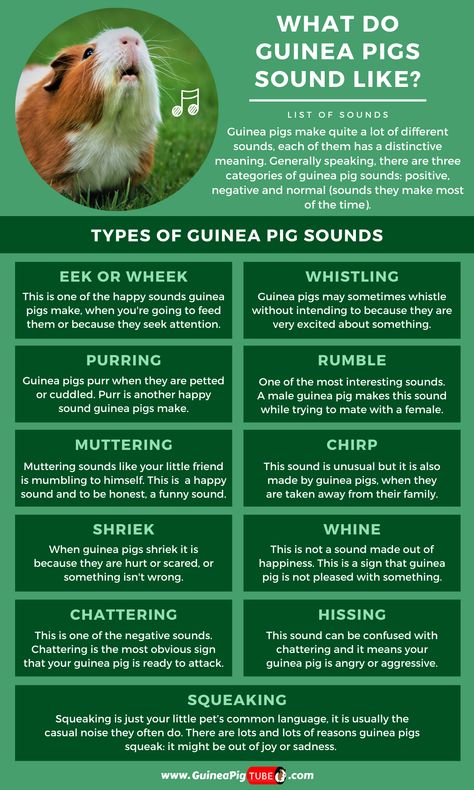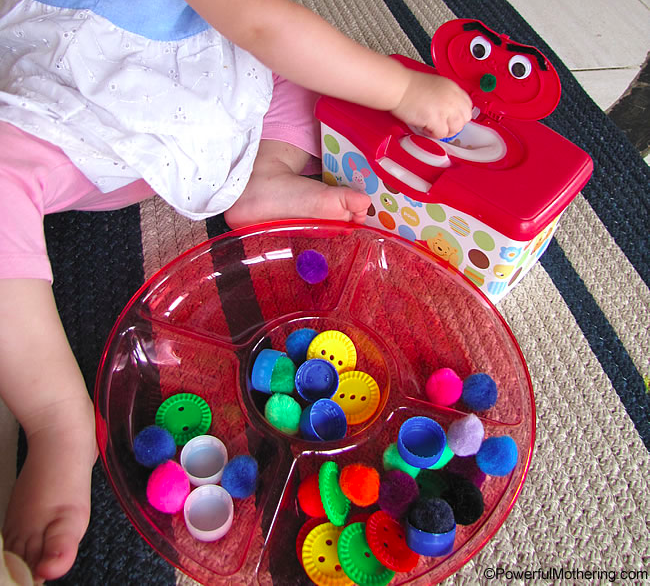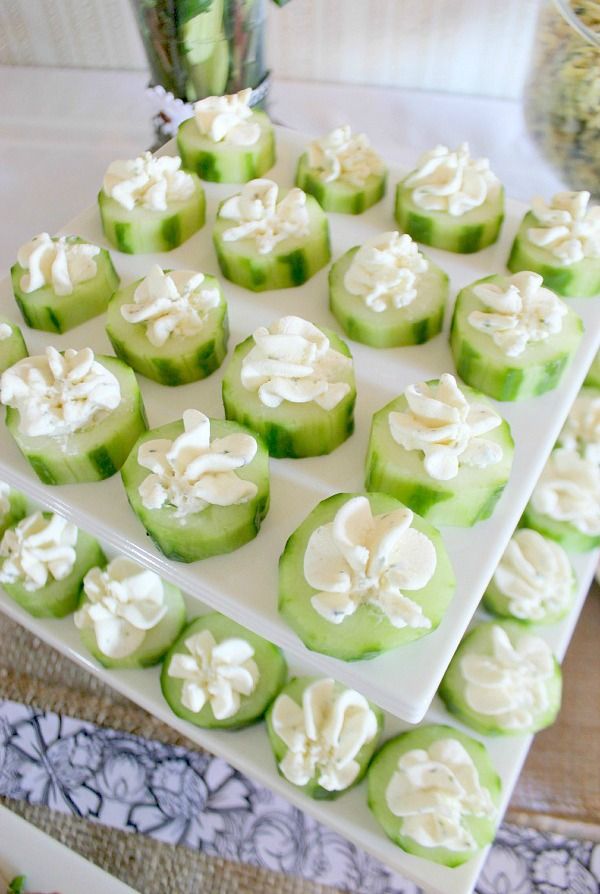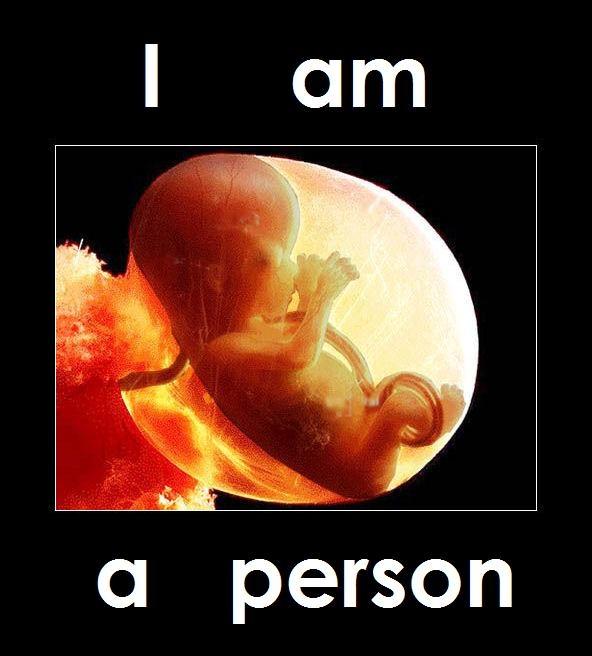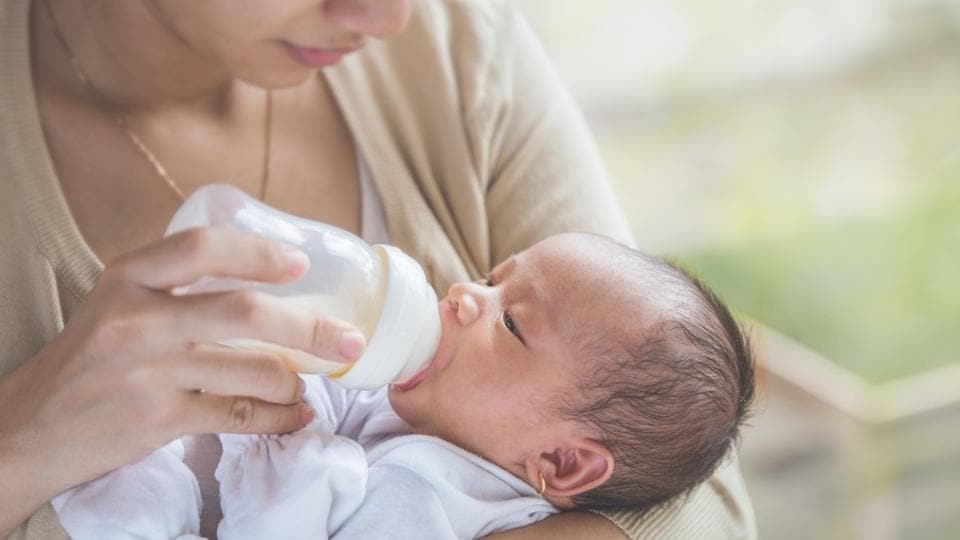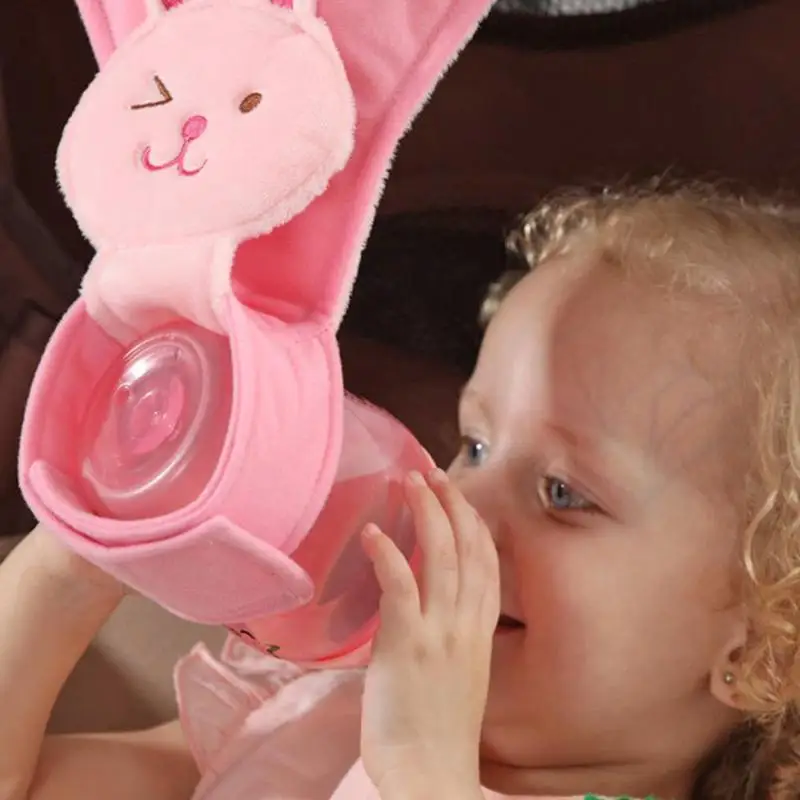When can baby guinea pigs eat solid food
Handling Rules For Newborn Guinea Pigs
Q:
We got our daughter a pet guinea pig earlier this year. The owners told us our new guinea pig, Bailey, was 6 weeks old. After a few weeks, we noticed her shape was changing. We were afraid of tumors, so I immediately brought her to the veterinarian — and, oh my gosh, she was pregnant. Bailey had four baby guinea pigs. The vet is saying not to let the children handle them at all for a few weeks and was not clear about the adults. The children have been handling small animals from rats to bearded dragons for years, so I am not worried about them harming them at all. I know the vet was basically saying they are fragile.
My question is: Is there a real timeframe that they should be left alone, or should we start socializing with them right away?
How soon can we have the baby guinea pigs sexed? We plan to keep one female baby guinea pig. Is there usually any problem with temperament when it’s a mother-daughter living together once the baby is an adult, or anytime for that matter?
How soon should we separate the male guinea pigs from the females so this will not happen again? Our research shows three weeks.
We do have homes for two, maybe three, of the guinea pigs already. What would you recommend as a good age to separate them from Mom successfully and go to their new homes?
Any advice on caring for Mom guinea pig and the babies is welcomed!
A:
Baby guinea pigs are such precious little creatures. Ears and legs bigger than the rest of their body they are precious little ones who should be handled with the greatest care but, yes, they can be handled from the moment they are born if you are not interfering with the birthing process and you are doing so with the utmost care. The mother guinea pig will not reject them because you are handling them.
Just like the human baby being passed around after birth, they have been listening to your voices, movies, music for however many months they have been in your home in their mother’s womb. So they are no strangers to you, your family or your pets. It has been my experience that handling baby guinea pigs from early on makes them very calm and easygoing with people.
Baby guinea pigs can be sexed at birth, but usually only by an experienced guinea pig person like your veterinarian or someone with lots of guinea pig familiarity. Male guinea pigs can become sexually active at 3 weeks (with minimal effectiveness but no less a nuisance). Female guinea pigs need to stay with their mother for four weeks. Male guinea pigs will appear to have a white ring in their genital area. Female guinea pigs will have what looks like a tiny grain of rice.
Baby guinea pigs are born supercharged and will start nursing somewhere in a 24-hour period, so don’t panic if they don’t latch on right away. A mother guinea pig needs to clean the babies and eat the afterbirth to chemically generate the mammary glands to start producing milk. Even human moms do not produce milk right off the bat; it takes a day or two.
Baby guinea pigs start nursing in 24 hours, and eat solid foods at three days as mom shows them how. They will need to nurse for at least three weeks no matter what. During this time, the mother guinea pig does a lot of other things for her baby guinea pigs. She stimulates them to urinate and defecate by cleaning their bottoms periodically throughout the day. She has to do this for at least three weeks. The mother is also producing a softer stool for the babies to consume so that they have the proper bacteria in their digestive systems. So being with the mother guinea pig for three weeks is very important.
During this time, the mother guinea pig does a lot of other things for her baby guinea pigs. She stimulates them to urinate and defecate by cleaning their bottoms periodically throughout the day. She has to do this for at least three weeks. The mother is also producing a softer stool for the babies to consume so that they have the proper bacteria in their digestive systems. So being with the mother guinea pig for three weeks is very important.
A mother-daughter guinea pig combination is often the best. If you are able to pair the male guinea pigs in some capacity with each other, it would be nice to keep the family together because male guinea pigs are difficult to pair, and the best pairings are brothers.
While the mom is nursing you can offer her alfalfa, which is a very rich grass. This is one of the few times you can offer it to her and the babies without worrying about the calcium content. Give the mother guinea pig and her babies the freshest and best of foods to ensure a sound base for them to grow from. “A handful of hay a day keeps the vet away,” is my motto. Of course they get about a flake of timothy hay each day because it is so high in vitamin C and there’s no worry about the calcium content. A flake is a segment of a bale of hay. It is about 3 inches wide and the width of the hay bale.
“A handful of hay a day keeps the vet away,” is my motto. Of course they get about a flake of timothy hay each day because it is so high in vitamin C and there’s no worry about the calcium content. A flake is a segment of a bale of hay. It is about 3 inches wide and the width of the hay bale.
Baby guinea pigs grow quickly, and before you know it they will be ready for their own lives. Interacting with them as much as you can will make them the best and most desired of guinea pigs because of their socialization and fearlessness with humans.
By: Shannon Cauthen
Feature Image: Marco_Piunti/iStock/Thinkstock
Share:
How & When to Do It
Hand-raising baby guinea pigs can be quite tricky and demanding. This responsibility should never be taken on lightly, and some points should be considered before deciding to hand-raise guinea pigs.
Most importantly, you need to be 100% confident that the mother guinea pig isn’t feeding her babies. Unless the mother guinea pig is known to be dead, there is a good chance that she is in fact feeding her babies. In general, mother guinea pigs do not constantly tend to their babies the way we might think.
Unless the mother guinea pig is known to be dead, there is a good chance that she is in fact feeding her babies. In general, mother guinea pigs do not constantly tend to their babies the way we might think.
Guinea pig mothers feed their babies only a few times per day and then leave them alone to their own devices. Guinea pigs are born being able to walk, see and hear, and most of them will start nibbling on solids within a few days, as well as drink milk from their mum.
Signs That Baby Guinea Pigs Have Been Neglected From Their Mother
If you think the mother guinea pig is “ignoring” her litter, have a look at the condition of the babies. If the baby’s tummies are round and full-looking, they are active and bright, warm and chatting away, making little noises, then the mother guinea pig is likely feeding them.
If the babies are cold, lethargic or have shrunken bellies, then you may have to intervene. It is a good idea to weigh the babies daily to make sure they are growing and gaining weight appropriately.
Handling Baby Guinea Pigs
Before handling the babies, wash your hands well. This not only helps to remove bacteria but also eliminates any smells from other objects or animals that can stress the babies. Once they’re clean, rub your hands in some clean, fresh hay and on the mother guinea pig’s fur to scent your hands.
Assisted Feeding
Before starting any syringe or bottle-feeding, it is worth trying to assist the babies with natural feeding.
If the mother guinea pig will tolerate it and isn’t too stressed, you can try to gently, but firmly hold the mother guinea pig in your arms and gently try to put each baby onto one of her nipples to self-feed. Sometimes it is helpful for the babies if a small amount of milk is expressed from the nipple to entice the baby to suckle. If you still don’t have any luck, then you may need to start to assist feeding or hand-raising.
What Formula Should I Feed Baby Guinea Pigs?
We recommended the Wombaroo Guinea Pig Milk. It is a premium product that contains vitamin C (which is very important for young guinea pigs). It comes as a powder which can be mixed with warm water to make the milk for the babies. All the mixing instructions are on the box.
It is a premium product that contains vitamin C (which is very important for young guinea pigs). It comes as a powder which can be mixed with warm water to make the milk for the babies. All the mixing instructions are on the box.
Wombaroo Guinea Pig Milk can be purchased from The Unusual Pet Vets. Alternatively, some other veterinary clinics and larger pet shops may also stock it.
Do I Need Additional Feeding Supplies?
In addition to the feeding formula, you will also need some small plastic syringes for feeding the milk to the babies. These can be purchased from our clinics or most pharmacies. You can also buy small plastic feeding bottles and plastic teats from large pet shops, but you will need to buy the smallest teat possible, as usually the puppy and kitten ones are generally too big. Most baby guinea pigs will feed from a syringe without a problem.
We recommend having a small scale to weigh the baby guinea pigs and for daily weight monitoring. The amount of milk to feed is dependent on the baby’s weight.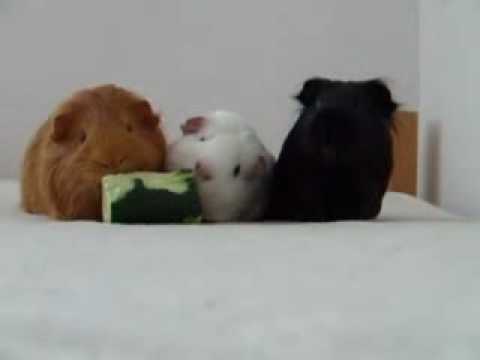
On the Wombaroo Guinea Pig Milk box, there is a weight chart and the number of mls of milk to be fed over 24 hours. Depending on how much the baby guinea pig will take in one feeding session will depend on how frequently you have the feed them.
Feeding Procedure
Step 1
Make sure all your syringes and bottles have been thoroughly washed before use.
Step 2
Baby guinea pigs are wiggly and unpredictable. They jump suddenly and unexpectedly. A drop of only one or two feet can be fatal, so make sure they are being fed and kept in a safe environment.
Step 3
Hold the baby in its normal sitting position in one hand, and the bottle/syringe in the other. Otherwise, have the baby guinea pig sitting (safely) on the floor or a table and feed with the bottle/syringe slightly vertically in front.
Step 4
Babies often resist feeding at first, and you must overcome the temptation to force-feed. If the baby doesn’t accept the teat or syringe, then wet the baby’s lips with a drop of warm formula so it licks it off. Once it has swallowed that, repeat the procedure over and over. Be persistent and gentle. The baby will soon learn about feeding time and will generally learn to take the formula willingly despite not doing this on the first feeding.
Once it has swallowed that, repeat the procedure over and over. Be persistent and gentle. The baby will soon learn about feeding time and will generally learn to take the formula willingly despite not doing this on the first feeding.
Step 5
Do not be too forceful and squeeze too much formula into the baby guinea pig’s mouth. They can inhale milk quite easily, so drip the formula slowly for the baby to lick up.
Step 6
If the baby grabs the teat and begins suckling, allow him to do so without adding any pressure yourself. The baby should be able to suckle with enough strength to empty the bottle or syringe without any help from you. If you provide extra force, the baby may accidentally aspirate formula that’s coming in too fast.
Step 7
If the babies do not suckle, it’s not a significant problem. Most will learn to lap or sip from the tip of the teat, and this is safer, in reducing the risk of aspiration. Try to hold the teat or syringe tip sideways or down-pointed, relative to the mouth, to further reduce the risk of aspiration.
Do Baby Guinea Pigs Need to Be Kept Warm?
It is best to keep the babies in a warm, quiet place and in a small box or carry cage. For heating, two or more babies usually snuggle to keep each other warm. However, if there’s only one baby, a warm water bottle or heat pack wrapped in a soft towel can provide an excellent heat source but be sure the guinea pig can crawl away from the heat if it gets too warm.
A Tip on Toileting
Many newborn mammals cannot urinate or defecate on their own. Most baby guinea pigs will require the stimulation of the mother’s grooming tongue on their bellies and genital region to release a stream of urine and faeces.
To mimic this behaviour use a cotton ball moistened with warm water, and gently tap or rub the urogenital area until you feel the baby’s abdominal muscles tense and a stream of urine is released. Getting a urination response may take 15-20 seconds of stimulation, or even more.
When Are Baby Guinea Pigs Weaned?
A mother guinea pig generally feeds her babies for about 3-4 weeks, gradually decreasing the frequency of feedings until they lose interest.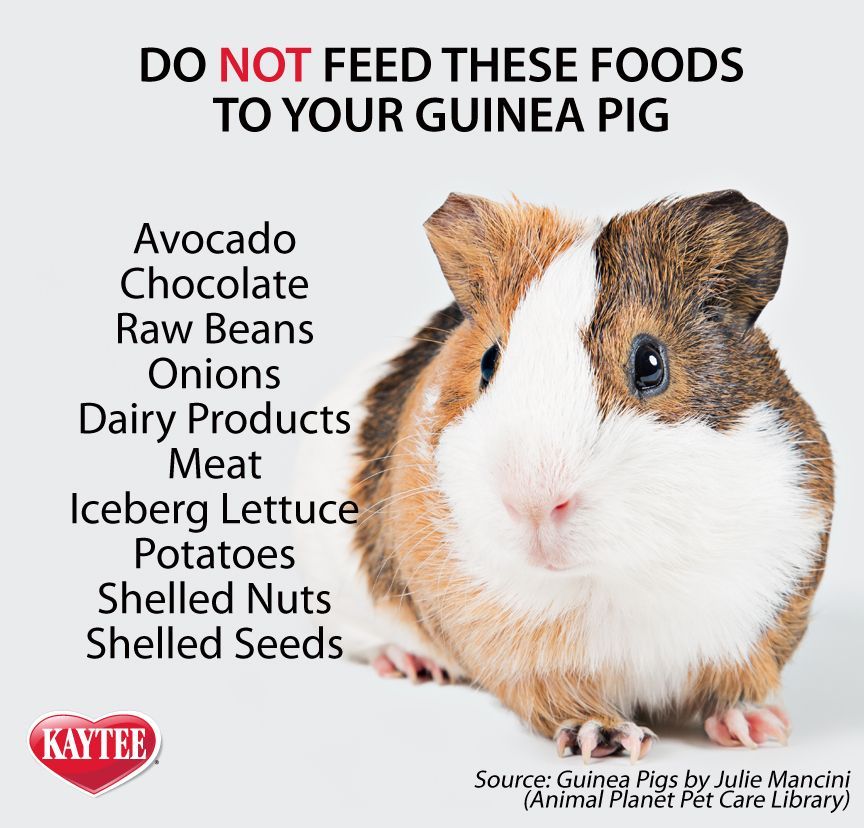 Your baby guinea pigs will start to nibble solid food from only a few days old. You can start introducing them to timothy and oaten hay, pellets, as well as small amounts of green vegetables and water in a shallow dish from when they are born, but this does not mean they are ready to be weaned. Once they start to eat solid foods it is even more critical that you continue the feeding formula to help control the growth of potentially harmful pathogens as the babies introduce new bacteria into their systems.
Your baby guinea pigs will start to nibble solid food from only a few days old. You can start introducing them to timothy and oaten hay, pellets, as well as small amounts of green vegetables and water in a shallow dish from when they are born, but this does not mean they are ready to be weaned. Once they start to eat solid foods it is even more critical that you continue the feeding formula to help control the growth of potentially harmful pathogens as the babies introduce new bacteria into their systems.
If the babies still beg for nursing by the age of 5 – 6 weeks, you can begin to dilute the formula with clean drinking water. Start with 25% water to 75% formula, and gradually decrease the percentage of milk until the babies lose interest.
Should the Male and Female Baby Guinea Pigs Be Separated?
Male and female baby guinea pigs should be separated from each other at 3-4 weeks of age to prevent any early pregnancies. Guinea pigs can then be sterilised from 16 weeks.
At What Age Can Baby Guinea Pigs Be Re-homed?
Baby guinea pigs can then be rehomed to new families by eight weeks of age, as long as fully weaned and eating solids well on their own. It is a good idea to have the babies examined by a guinea pig vet prior to sending them off to their new forever home.
For more information on hand-raising baby guinea pigs, contact your local Unusual Pet Vets team.
Age of Guinea Pig
Guinea pig has a short lifespan, usually around 8 years, so when choosing a pet it is important to make sure it is young and healthy. If you are buying a very small pet, it is easy to deal with age, but what if you are buying an adult?
Let's see what features will help you determine the age of the pig:
- character and physical activity. The young animal is active, runs a lot, enjoys communication, plays, he is interested in everything that happens around him, he is ready to taste new products and is very trusting. An elderly pet prefers to relax and sleep, looks very apathetic;
- height and weight.
 A cub aged about a month weighs about 0.5 kg, an adult female about 1 kg, male - 1.5 kg. The elderly animal loses weight;
A cub aged about a month weighs about 0.5 kg, an adult female about 1 kg, male - 1.5 kg. The elderly animal loses weight; - wool and leather. A young healthy animal is distinguished by a thick coat, shiny, rich in color. Koda clean, elastic, no damage;
- teeth and claws. Start your inspection with the claws on the hind legs. If they are twisted, have a yellow tint, are too long or worn off, then the animal is no longer very young. It's the same with teeth. The young pet has white, strong and sharp teeth that allow it to eat solid food.
Of course, age is not always the reason for a change in the appearance or behavior of an animal, sometimes the fault is malnutrition or unsuitable living conditions. If the baby eats properly, it is always clean in his cage, and the owner loves him, the appearance will be on top.
A few more important tips for choosing
If you decide to get a rodent, try to find out as much information from the seller.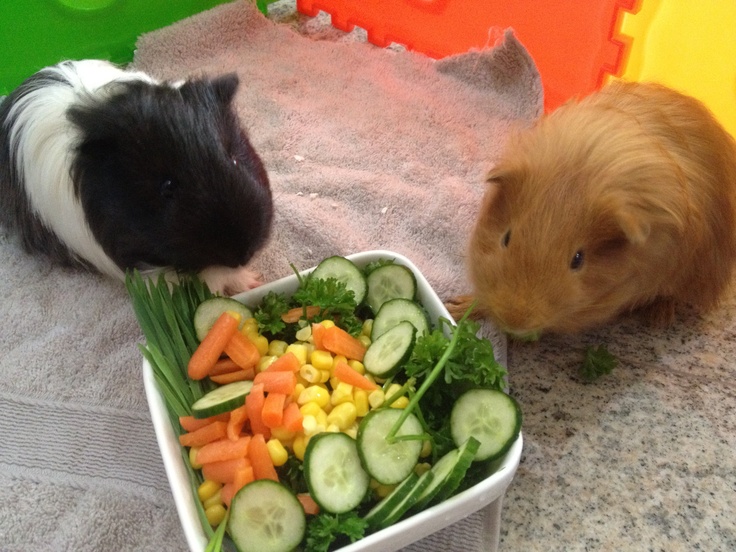 Ask questions about age, food preferences, personality traits. Examine the animal, evaluate the appearance of the coat and teeth, check if any diseases appear outwardly.
Ask questions about age, food preferences, personality traits. Examine the animal, evaluate the appearance of the coat and teeth, check if any diseases appear outwardly.
Also pay attention to how the pet behaves in the cage. It is important that you not only like him outwardly, but also that you "get along with the characters."
At what age should a pig be taken?
The active age of the pig is up to 5 years, then it begins to age. That is why it is not recommended to take a pet older than 3 years into the family. In addition, it will be difficult for such an animal to adapt to new living conditions.
Before a month and a half, it is also not worth taking the baby home, until this moment it is best for him to be with his mother, who not only feeds him with milk, but also instills many skills, helps to adapt to the world around him, establish social contacts, shows how to react in one situation or another. Up to this point, immunity and microflora are formed in the pig, the work of all systems and organs is getting better.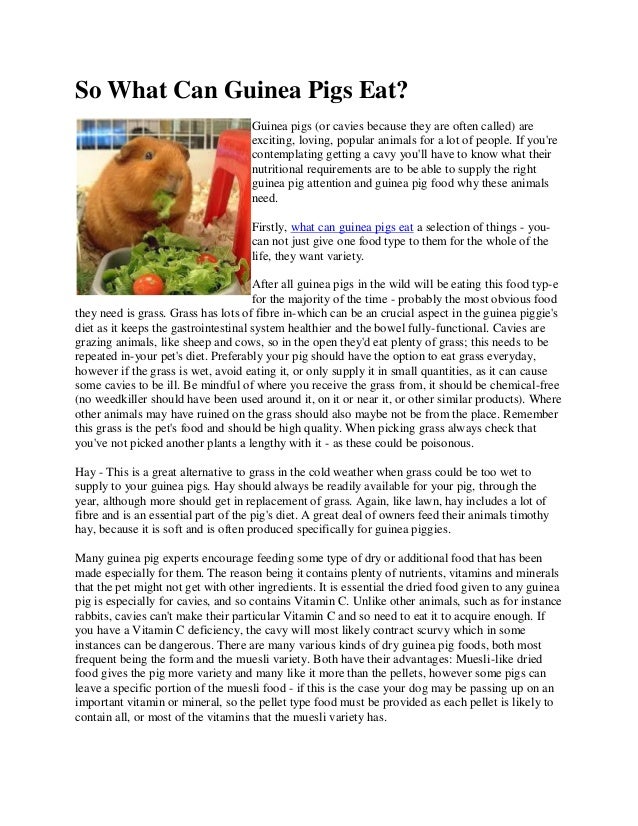
Too small a pet will not be able to learn many things on its own, will be sick for a long time and will experience great stress when moving.
Be responsible for introducing a guinea pig into your home. Find out as much information about it as possible, and if necessary, consult a doctor.
Offspring of guinea pigs. How to take care of babies
L:.1 -->
We guess you didn't even know that baby guinea pigs are unique in nature. Imagine that while still in the womb, they can hear and see. The opening of the eye occurs in babies two weeks before birth. Thus, when born, these fluffy crumbs already see perfectly and hear sharply. Amazing, right? But that's not all!
The incisors of small guinea pigs are fully developed for the birth process and are ready for use. And such amazing features are inherent in nature in all pets of this species, regardless of breed.
What is important to know about newborn guinea pigs
If the babies are underweight and weigh less than 40 grams, the chances of the babies surviving are practically zero. Remember that the normal weight for newborn offspring of guinea pigs is 45-140 grams.
Remember that the normal weight for newborn offspring of guinea pigs is 45-140 grams.
If there is only one baby in the litter, then most likely he will weigh more. Thus, the more children in the litter, the less chance they have of survival. After the expiration of a month from the moment of birth, it is necessary to transplant the offspring from the mother.
How to feed a baby guinea pig
For four weeks, the guinea pig takes care of her babies with all the care and attention. The nutrition of babies for the most part consists of mother's milk, which contains almost 45% fat. Such nutrition allows the offspring to develop rapidly, and after a short time, small guinea pigs are already beginning to eat solid food.
Rest assured, already on the second day after birth, babies begin to study the place of residence for the presence of additional food.
Another amazing fact: practically all the necessary vitamins for growth and development of newborns are found in their mother's litter. It is in it that there are vitamins K and B, so do not be embarrassed that young people eat a large amount of litter per day, but the cage will be cleaner.
It is in it that there are vitamins K and B, so do not be embarrassed that young people eat a large amount of litter per day, but the cage will be cleaner.
Growth of guinea pigs
Watching guinea pigs grow is a pleasure, especially since this process is quite fast. Within 15 months, the babies grow up, and the cubs gain weight almost every day. Normal weight gain is about 4 grams. Within two weeks, babies become twice as large as at the time of birth.
Weak offspring
Unfortunately, no brood can be immune from weak offspring. It may happen that there will be several babies in the litter who will not have a chance to survive.
If we talk about the reasons for such a situation, these can be:
- Wrong position of babies in the womb. If the fetus is at a disadvantage in relation to other babies and receives less nutrients and oxygen, it is natural that it will be born weak.
- Large litter. We have already said that the more babies the mother has, the greater the chance of the birth of non-viable individuals.
